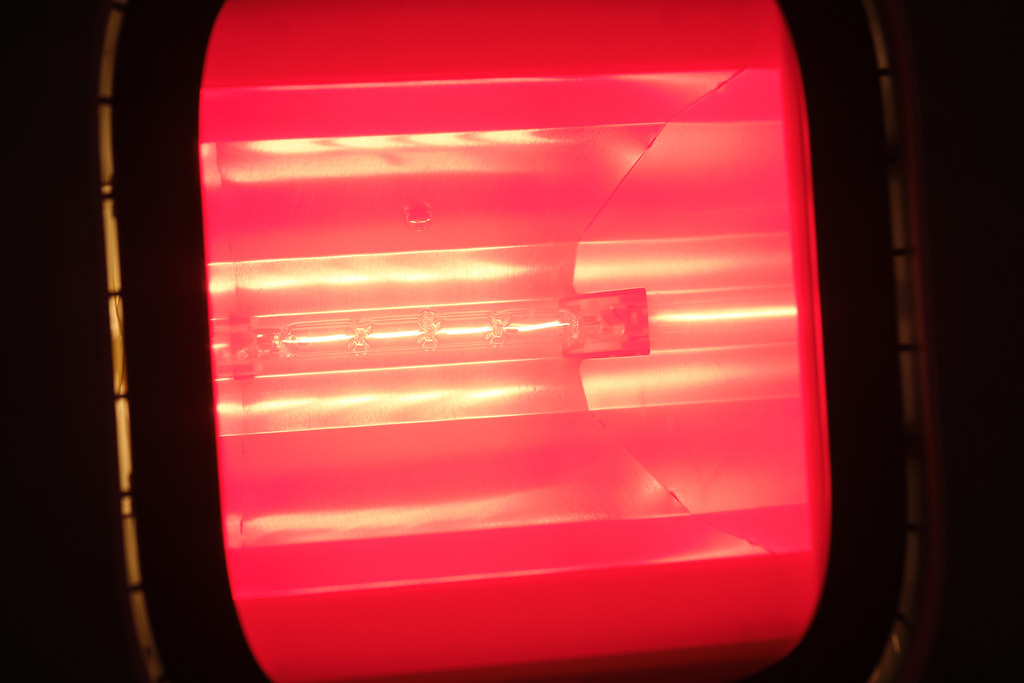Using red and infrared light therapy to boost cellular activity and circulation may assist to lessen pain and inflammation.

Red light therapy, also known as low-level laser therapy (LLLT), low-power laser therapy (LPLT), and photobiomodulation (PBM), involves exposing the skin to a lamp or laser emitting red light. Endre Mester found it by chance in 1967 at the Semmelweis Medical University in Budapest, Hungary. He discovered that rats’ wound healing and hair growth were both aided by laser light.
The mitochondria within our cells, often referred to as power generators, absorb these red rays, thereby generating more energy. This increase in cellular energy aids in cell repair and promotes overall cell health.
Also known as low-level laser therapy (LLLT), low-power laser therapy (LPLT), or photobiomodulation (PBM), red light therapy has garnered attention for its potential to alleviate a range of health issues, particularly in the realm of pain management and skin rejuvenation.
Understanding Red Light Therapy
Red light therapy is a non-invasive treatment that involves exposing the skin to low-wavelength red light. The key players in this therapy are the mitochondria, often referred to as the powerhouse of our cells. These mitochondria absorb the red light and convert it into energy. This energy, in turn, stimulates a variety of biological processes within the body.
Numerous studies, including one published in the National Library of Medicine, suggest that red light therapy activates the body’s natural physiological responses, facilitating self-healing and speeding up recovery processes. This, in turn, reduces pain. Red light therapy is particularly beneficial for easing muscle pain, improving joint mobility, healing muscle injuries, and alleviating post-exercise soreness.
How Red Light Therapy Works
The fundamental principle behind red light therapy is cellular rejuvenation. When our cells receive this boost of energy from red light, they become more efficient at repairing themselves and carrying out their functions. Here’s how it works:
- Increased ATP Production: Red light therapy enhances the production of adenosine triphosphate (ATP), the molecule that stores and transfers energy within cells. This helps cells function optimally and promotes their natural repair mechanisms.
- Improved Blood Circulation: Red light therapy can stimulate the formation of new capillaries, which leads to improved blood circulation. Enhanced circulation means better delivery of oxygen and nutrients to cells and faster removal of waste products.
- Reduced Inflammation: By increasing cellular activity and improving blood flow, red light therapy can effectively reduce inflammation. This makes it a valuable tool in managing conditions associated with chronic inflammation, such as arthritis and muscle pain.
- Collagen Production: In the world of skincare, red light therapy is celebrated for its ability to stimulate collagen production. Collagen is essential for maintaining skin elasticity and reducing the appearance of fine lines and wrinkles.
Applications of Red Light Therapy
- Pain Management: One of the primary uses of red light therapy is in the management of pain. Whether you suffer from chronic joint pain, muscle soreness, or even migraines, red light therapy sessions may offer relief. Many individuals report reduced pain and improved mobility after regular treatments.
- Skin Rejuvenation: Red light therapy is a non-invasive and gentle way to improve the appearance of the skin. It’s used to treat various skin conditions, including acne, psoriasis, and eczema. Moreover, it’s favored by those seeking to maintain youthful skin.
- Hair Growth: Some studies suggest that red light therapy may stimulate hair growth by increasing blood flow to hair follicles and promoting the proliferation of hair cells. It’s a promising option for individuals experiencing hair loss.
- Wound Healing: Medical professionals have explored red light therapy’s potential to accelerate wound healing. By boosting cellular activity and reducing inflammation, it may help wounds heal faster and with less scarring.
Safety and Side Effects
Red light therapy is generally considered safe with minimal side effects. Users may experience mild skin irritation, eyestrain, or a slight headache, but these effects are typically temporary and mild.
It’s crucial to follow safety guidelines and use appropriate eye protection during treatments to avoid potential eye discomfort.
Conclusion
As the field of wellness continues to expand, red light therapy stands out as a versatile and promising treatment option. Its non-invasive nature, combined with its potential to alleviate pain, enhance skin health, and aid in various other healing processes, has made it a valuable addition to the world of alternative therapies.
Overall, side effects are typically mild and short-lived, making red light therapy a generally well-tolerated and non-invasive procedure.
While individual experiences may vary, red light therapy remains a beacon of hope for those seeking natural and holistic ways to improve their well-being. Consult with a healthcare professional or licensed therapist to explore how red light therapy might benefit you
